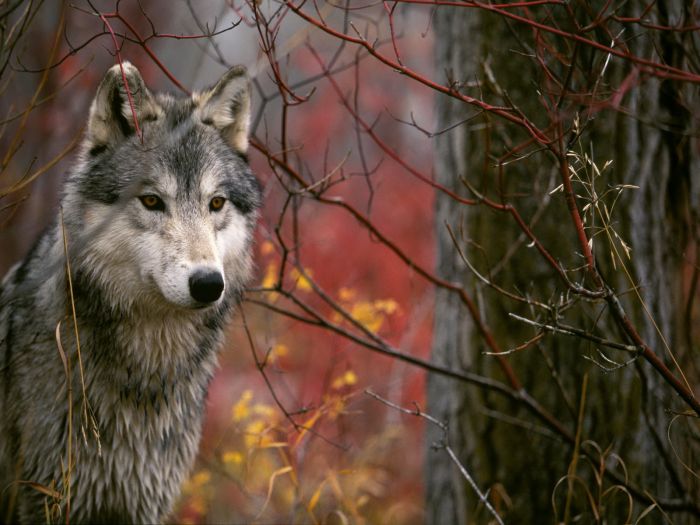|
|
Gray Wolf
|
Wolves howl to assemble the pack (usually before and after hunts), to pass on an alarm (particularly at a den site), to locate each other during a storm or unfamiliar territory and to communicate across great distances. Howling consists of a fundamental frequency which may lie between 150 and 780 Hz, and consists of up to 12 harmonically related overtones. The pitch usually remains constant or varies smoothly, and may change direction as many as four or five times. Wolves from different geographic locations may howl in different fashions; the howls of European wolves are much more protracted and melodious than those of North American wolves, whose howls are louder and have a stronger emphasis on the first syllable. The two are however mutually intelligible, as North American wolves have been recorded to respond to European-style howls made by biologists.
Wolf howls are generally indistinguishable from those of large dogs. Male wolves give voice through an octave, passing to a deep bass with a stress on "O", while females produce a modulated nasal baritone with stress on "U". Pups almost never howl, while yearling wolves produce howls ending in a series of dog-like yelps. Howls used for calling pack mates to a kill are long, smooth sounds similar to the beginning of the cry of a horned owl. When pursuing prey, they emit a higher pitched howl, vibrating on two notes. When closing in on their prey, they emit a combination of a short bark and a howl. When howling together, wolves harmonize rather than chorus on the same note, thus creating the illusion of there being more wolves than there actually are. Lone wolves typically avoid howling in areas where other packs are present. Wolves do not respond to howls in rainy weather and when satiated.
• Other vocalisations
Other vocalisations of wolves are usually divided into three categories: growls, barks and whines. Barking has a fundamental frequency between 320–904 Hz, and is usually emitted by startled wolves. Wolves do not bark as loudly or continuously as dogs do, but will bark a few times and retreat from perceived danger. In captivity, wolves may learn to bark more often if they hear dogs doing so.
|
|









